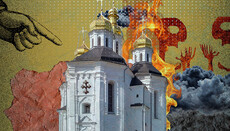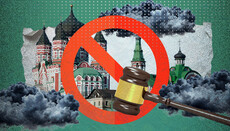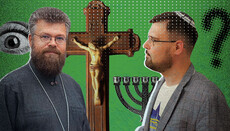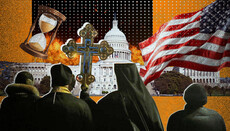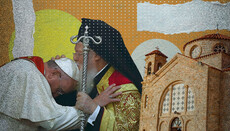Why are the UOC churches “converted” into the UOC-KP ones? «Сui prodest» – who benefits from it?
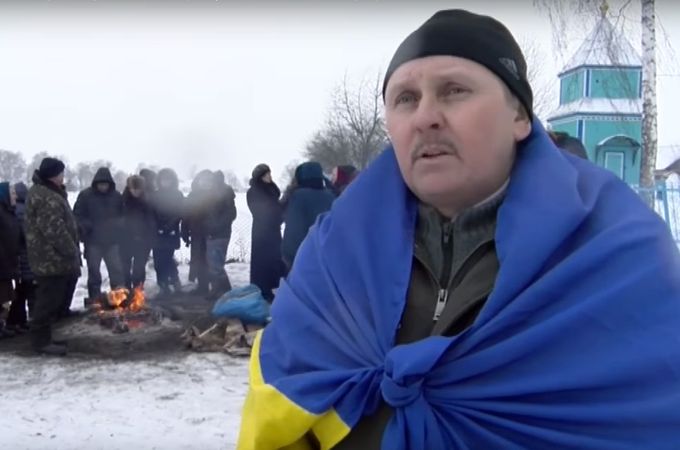
In the last days of January attention of the Ukrainian Orthodox was pinned to the plot about another inter-denominational conflict in Rivne region, this time – in Krasnosyllia village, situated in Hoshcha district. The programme was released by “Rivne 1” TV channel journalists and was called “In Hoshcha district the villagers object to the church being privatized by the Moscow Patriarchate”. The title (don’t you agree?) is impressive, but how much objectively does it reflect the situation?
Clashes around endeavors to transfer the UOC churches into the UOC-KP in Western Ukraine, most notably – in Rivne and Ternopil regions – have evoked such a considerable public response that stepped over the borders of our country long ago. This issue has become a matter of particular interest to the OSCE, it is commented on by Patriarchs of Local Churches, it was one of the agenda points at the Synaxis of Orthodox Church Primates in Chambesy.
One party (UOC-KP) calls these events “voluntary transitions”, while the other (UOC) insists on these conflicts being assessed as forced and raider seizures. The latter is of no surprise as with the majority of such cases, the “Right Sector”, “Aidar”, “Samooborona” (Self-defense) combat units and other members of nationalist forces were involved in the peripetias. Fighters of these military forces employ all the means at hand in order to achieve the desired goals except for, perhaps, firearms and silent weapons. Tens of battered and injured parishioners of the UOC in such conflicts is growing into a pattern – this fact being almost “a drop in the bucket” at the background of the two-year full-scale military operations in the country.
Yet there are cases when incidents around the UOC churches occur without the involvement of special combat units. These scenarios are implemented by means of somewhat different gears. It looks as follows: certain people have lived for years and decades in a certain remote village like a close friendly community, which residents are relatives, friends or good mates. They go to a church together, have their children baptized, enjoy wedding ceremonies, and attend burial ceremonies. They respect and support their local priests, whose life in a village is quite difficult and challenging. At one time everything changes. Yesterday’s friends turn into wicked enemies, considerate wishes are replaced by curses, while the priests who have been in service for decades in one village and remember the participants to the conflict since they were christened in a font, morph into separatists, Moscals and, generally speaking, “folk enemies”.
How does it evolve? The point is that nothing starts for any particular reason, out of the blue. For a conflict to come into its own, there should be:
1. Ground work, i.e. ploughed soil to let seeds of discord spring up.
2. A conflict triggering impulse.
A run-up period among our country’s population has continued for a long time, and as practice shows, has been quite successful. The UOJ in its “Antifake” column highlights on a regular basis video and published materials of the Ukrainian mass media, clearly directed against the church, to be more precise – against the Ukrainian Orthodox Church. The amount and aggressive content of this stuff enables to conclude that a well-organized information war has been waged against the Church. Its goal is to convince Ukrainians that the UOC collaborates with the enemy, its churches being a hub of the hostile anti-Ukrainian propaganda. Consequently, the duty of each patriot is if not to destroy this “nursery bed”, then at least to accuse it and largely support the “ultrapatriotic” UOC-KP. The information that, according to the Ecumenical Orthodoxy hierarchs, Kyiv Patriarchate, in fact, is not a church but rather a political organization with external orthodox attributes, either remains silenced or presented as the enemy propaganda.
In the villages with only one church (that belongs to the UOC), and with residents whose subconscious level is warmed up due to the mentioned programs and mass media publications, there is supposed to be one person (or a group of persons) who will be able to turn ripe inner protest of the population against the “Moscal church” into particular actions – to transfer the church so that it becomes the UOC-KP property. Such developments are initiated either by local authorities who have nothing to do with the church (but who kiss up to their chiefs), or new village activists. The latter, as a rule, did not attend the church at all or went there now and then, but suddenly were hit with neophyte love for the Church; true though, the fire of this love is colored blue-and yellow.
The conflict which is depicted in the program of Rivne region journalists in a peculiar way, is a vivid proof to the scheme described above: there is a village with only one Orthodox church available there (UOC), there is a patriotic group of people (in the current situation in Ukraine it means anti-Church group), and there is a person in authority who manages the crowd very well. The “Rivne 1” TV plot which is biased, to put it mildly, adds to the conflict exacerbation. Thus, the ring closes.
How does it specifically work?

In Krasnosillia village there operates a village council with three populated areas subordinated to it: Krasnosillia, Chudnytsia and Vytkiv. Nadezhda N.Gumeniuk (the woman on the photo above) is a head of the council. She is Baptist by confession and, as she states herself – an outside person for the Orthodox Church and not interested in inter-denominational clashes at all. Nevertheless, due to a strange coincidence, namely with the direct participation of N. Gumeniuk, within a short period of time, there were created the Kyiv Patriarchate communities in the villages entrusted to her, and later – assaults of the UOC churches were undertaken by members of the KP communities. Activity of the council head is coordinated by Taras T. Gomeniuk, deputy head of Hoshcha district state administration and representative of “Svoboda” radical party. Being experienced in juridical proceedings, Mr. Gomeniuk takes care of and supports the conflict-monger communities regularly providing them with legal assistance.
The debut experience was Chudnytsia village, where actions of the village council head cannot be qualified otherwise than lobbying the Kyiv Patriarchate interests (contrary to the law). A UOC church was seized there a year ago, and the Orthodox community is forced to have services in the priest’s house.
This time the Krasnosillia case follows a familiar scenario. There is created the UOC-KP community. Then the voting on “transfer” of the UOC church to the Kyiv Patriarchate is arranged in the village council building (kindly allowed by local authorities for such event). The voting does take place but 70-75 persons who attend the meeting, do not make any difference. It means there must a “push” to wake up the other village residents and compel them to take actions.
For this end the head of the village council “makes a shot” spreading rumors about the priest “who purportedly wants to privatize the church land”. She herself says the following: “The conflict came from nowhere. We even couldn’t fancy such a turn. The priest filed an application on privatization of the land plot. The villagers were outraged and claimed he shouldn’t”.
Sure thing, such message catalyzed an immediate conflict. Activists of the KP community broke into the UOC church during the worship service and demanded explanations from the priest. He tried to tell the indignant people the truth, but nobody wanted to listen to him: the head of the village council couldn’t tell a lie!
The words of Mrs. Gumeniuk appeared to be false. In fact, technical documentation for the land plot ownership title wherein the church is located is a requirement of tax inspection agency and has nothing to do with the privatization of the land by the priest. A lawyer from Rivne diocese comments the statement made by the council head in the following way: “A land plot is conveyed solely as a right to regular use only to the religious community. The head of the village council couldn’t but know that. She virtually destabilized the situation in the village”.
However, let’s come back to the situation in the village on 17 January. Having waited till the end of the Liturgy (thankful to them at least for this favor), the KP adherents pushed the priest and the UOC parishioners away from the church and cut in their locks.
Interesting to say, at the “round table” which was held in Hoshcha district state administration the next day and where parties to the conflict tried to have an agreement with the help of the authorities, “impartial” Baptist Gumeniuk behaved quite partially, doing her best to present the situation in a way that the UOC priest did not purportedly have the documents required for the community. Who better than she to know the true state of things?
What is curious about all this is that the Kyiv Patriarchate activists even during the most heated conflict debates, do not reveal any animosity towards priest father Alexandr, on top of that, they call him to join the UOC-KP together with them.
It proves the fact there are actually no serious reasons for the conflict inside the village, but rather externally imposed political motives.
It’s possible enough that the impact of the village council head provoked “activists” to break the agreement earlier reached at the talks concerning the church closure for a month term for the law enforcement bodies to resolve the issue. 15 minutes after the end of the “round table” the KP members opened the church (having keys from the earlier made locks) and began their worship services.
This is a real déjàvu story tested on several dozen illegal seizures of the UOC churches in western Ukraine, when the Kyiv Patriarchate, acting against the Ukrainian laws and court decisions, by some means took over the UOC church following “the right of the might” principle.
Still there is a question – what happens next? The people who are so incredibly active in the UOC church raid (or as they call it “transfer to the Kyiv Patriarchate) didn’t use to be regular church-goers and remembered about the church only in the event of big religious holidays. Their motives can be understood to some extent: they believe what they do is fair – turn the Church from hostile and Moscal into Ukrainian and patriotic. The problem is if those people didn’t attend the church when it was “Russian”, they will most probably not do it when it becomes “Ukrainian”. Who will go to the church then? The people who’d lived a church life before it was seized continue to live so. The only difference is that from spacious ancient sanctuaries they were displaced into cramped garages.
Uhryniv village could perfectly serve as a case study of how Kyiv Patriarchate communities have existed since the church seizure. For over a year the UOC community in Uhryniv village has had to hold worship services in their priest’s house (by the way which might be taken away, too) as their church was seized by the UOC-KP adepts. What is the situation like in the church?
According to the UOJ reporter in Uhryniv, on the Feast Day of Entrance of the Theotokos into the Temple (this is an important religious holiday) there were no more than 20 persons form the UOC-KP community. On the Baptizing Day the UOC-KP proponents together with local head of the village council Vitaliy Shpyl (the most enthusiastic participant of the church take-over) went to the neighboring village Bayev and did not hesitate to swim in the well next to the local UOC church! The fact that the well was blessed by the “Moscal” Church didn’t embarrass them in the slightest! (see the photo below)
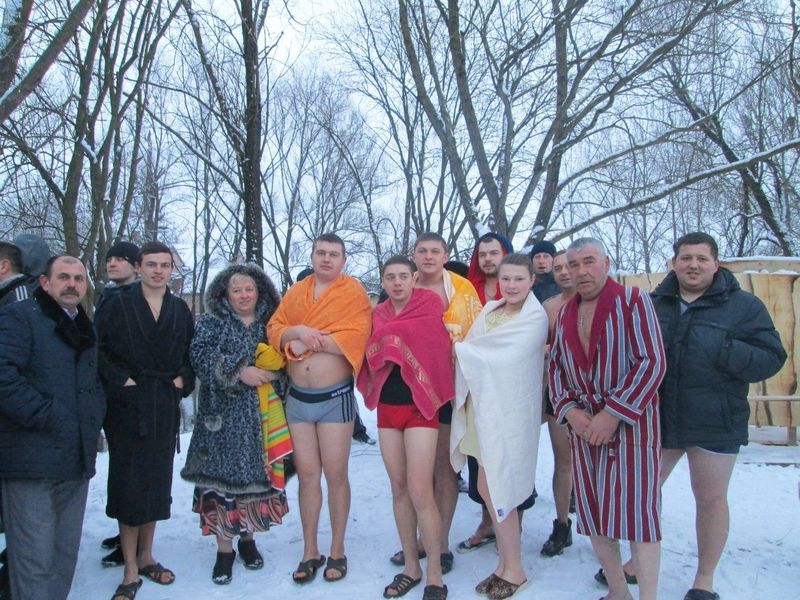
In the plot prepared by Rivne journalists there was shown a woman who was moved to tears by the UOC-KP church service performed in Ukrainian. Tears tend to get dry, while serving God in any language requires that believers must have hard inner work. One half of an Orthodox service consists of reading the Psalm book. Even when one reads a translated version of psalms feels puzzled by vague words and fragments which need to be expounded further. Prayer and spiritual perfection call for extremely hard work, while holiness is a peak to be reached by the most diligent and persistent believers. Can a mechanical change of language bring a person closer to God? Will a person become a hermit just because he or she will start praying in Ukrainian given that he didn’t do it in Old Church Slavic – the language of our ancestors? I assume everyone will be able to find his or her own answer to this question.
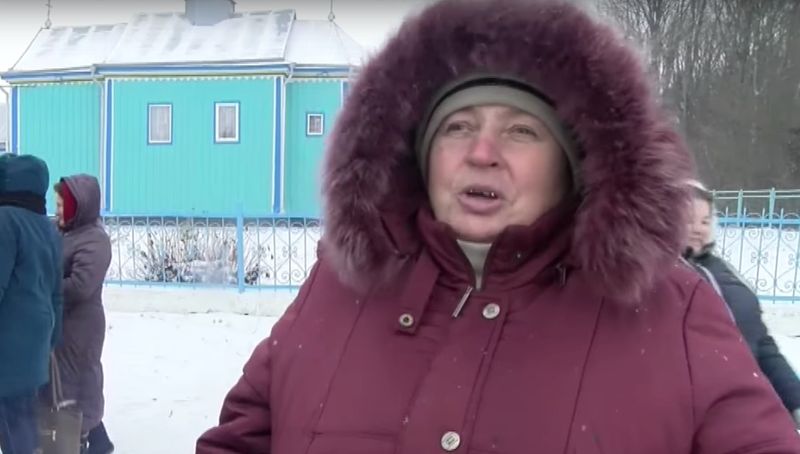
One very authoritative and active media figure protopriest of the UOC KP Yevhen Zapletniuk has recently posted the following on his Facebook page: “If you still sincerely love your senior priest from the Moscow Patriarchate who has ministered well your spiritual life for many years, stands apart from politics, and does not curse Maidan and Europe at his sermons – it will be unfair to leave such church even before yourself”.
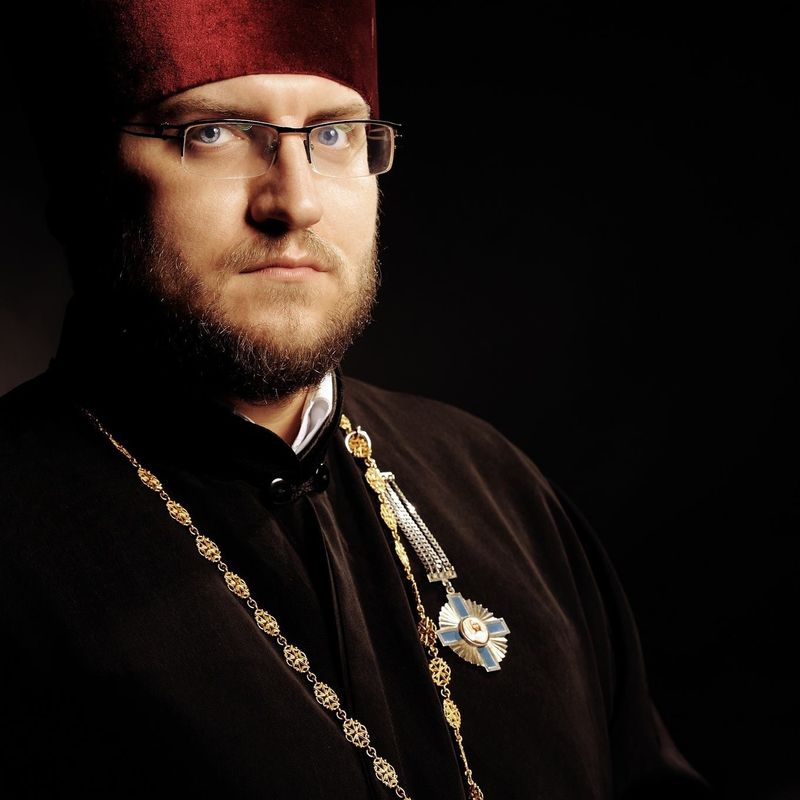
These words can be undoubtedly referred to any UOC community in western Ukraine, where the churches were seized by the fellow villagers who had fallen for vociferous UOC-KP patriotic slogans. There wasn’t a single case of political propaganda at the UOC parish during the church sermon! As a rule, senior priests of these churches served there for a long time and were loved and respected by the village residents. So what are these “voluntary transitions” all about? What are they coordinated and implemented for? Why sow discord, hatred and animosity among the people who used to live in peace and harmony?!
There is a Latin expression “cui prodest” – “who benefits”? It is pretty much common in jurisprudence, literature, detective genre.
When it is not clear at once what political or any other forces defend popular trends or ideas, when actions and words of these forces contradict each other, one ought to always ask a question: “cui prodest”?
